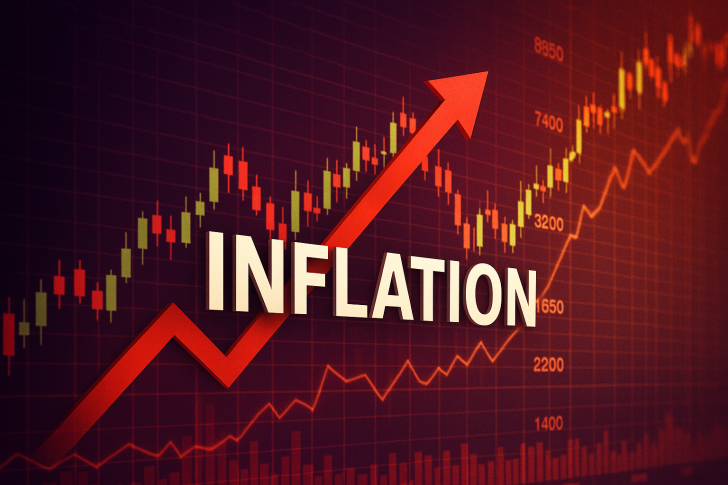A year ago, inflation dominated every news cycle—front pages, cable segments, political speeches. Fast forward to today: price pressures remain elevated, yet the topic has largely disappeared from headlines. This shift prompts two important questions: Why has media focus on inflation cooled off? And what does the data actually show about where prices stand now?
Chart Analysis: Inflation Staying Stubborn
A recent observation by Jon Cooper sparked debate by noting that inflation under President Trump gets far less attention than it did previously, raising questions about whether the story is being deliberately underplayed or simply crowded out.
The chart reveals that inflation remains well above the Federal Reserve's 2% target, with no sustained return to pre-pandemic norms. Inflation has repeatedly bounced back after brief cooldowns, showing sticky resistance rather than steady decline. Recent data points even suggest renewed upward pressure, indicating that price increases remain embedded in the economy. Meanwhile, equity markets and bond yields continue reacting sharply to each inflation release, showing that investors haven't stopped worrying—even if the public conversation has quieted down. The numbers tell a clear story: inflation hasn't meaningfully eased, regardless of how much airtime it's getting.
Why Coverage Disappeared
Several forces explain inflation's vanishing act from the news: political narratives shift with election cycles, amplifying certain issues while burying others. Public fatigue plays a role too—people and businesses have adjusted to higher prices, making them feel like background noise instead of breaking news. With the Fed already holding rates high, attention moved toward speculation about rate cuts rather than the underlying inflation problem. And finally, other crises—geopolitical tensions, AI breakthroughs, global conflicts—have simply taken over the headlines, pushing inflation stories to page five or beyond.
Inflation during Trump's term receives noticeably less coverage than it did under Biden, despite comparable or worse numbers. This highlights how economic stories get filtered through political lenses, shaped as much by timing and narrative preferences as by raw data. For investors, the lesson is simple: follow the numbers, not the noise.
 Usman Salis
Usman Salis

 Usman Salis
Usman Salis


